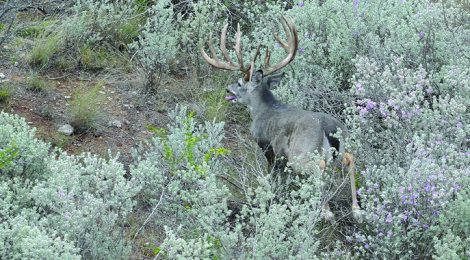
The Best of 2014 – From Above
Some awesome bucks possessing Heavenly headgear along with comments from TOJ’s leading disciple of all things whitetail.
Story and Photography by Bob Zaiglin
In order to obtain deer population statistics upon which harvest recommendations are based on the various ranches I work with, I spend a considerable amount of time throughout the fall in a helicopter. Although it’s not the only method employed to survey deer populations, it is the most popular method in South Texas. By transecting ranch land 40 feet above the ocean of brush, I obtain a significant amount of information on the whitetail population over a short period of time.
It’s also a method of estimating quail numbers along with other species such as coyotes, feral hogs, javelina, and exotic hoof stock if present. The flight represents an instructional platform where I can inform participants as to areas on the ranch that require improvement.
One of the benefits I enjoy being the coordinator of the wildlife management program at Southwest Texas Junior College is the opportunity to introduce students to the technique. And since only academically inclined students are selected, it coerces others interested in participating to study harder.
In the 1980s, the helicopter survey was considered an extremely efficient method in determining deer population size, but based on research experience, we now know that in some cases, 50% of the deer inhabiting an area go unobserved. But it remains an excellent review of the land and its occupants when conducted by experienced personnel.
Since the middle of September, I have spent 48.6 hours in a helicopter conducting game surveys on some of the best deer country in Texas. Over that time I have flown 72,484 acres totaling 1,230.4 miles of transect lines, viewing 4.2 deer per mile. As of my last preseason survey on November 22, I have seen a total of 5,197 deer composed of 2,154 bucks, 1,765 doe, and 1,278 fawns. The overall sex ratio was .82 doe per buck and a fawn survival of 72%.
Based on this information, it is becoming obvious that landowners are investigating the benefits of balanced sex ratios with bucks predominating the observations with 1.2 bucks per doe sighted.








